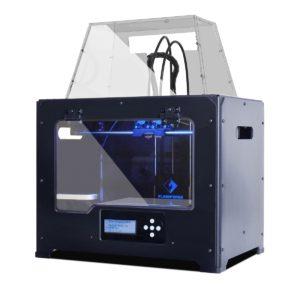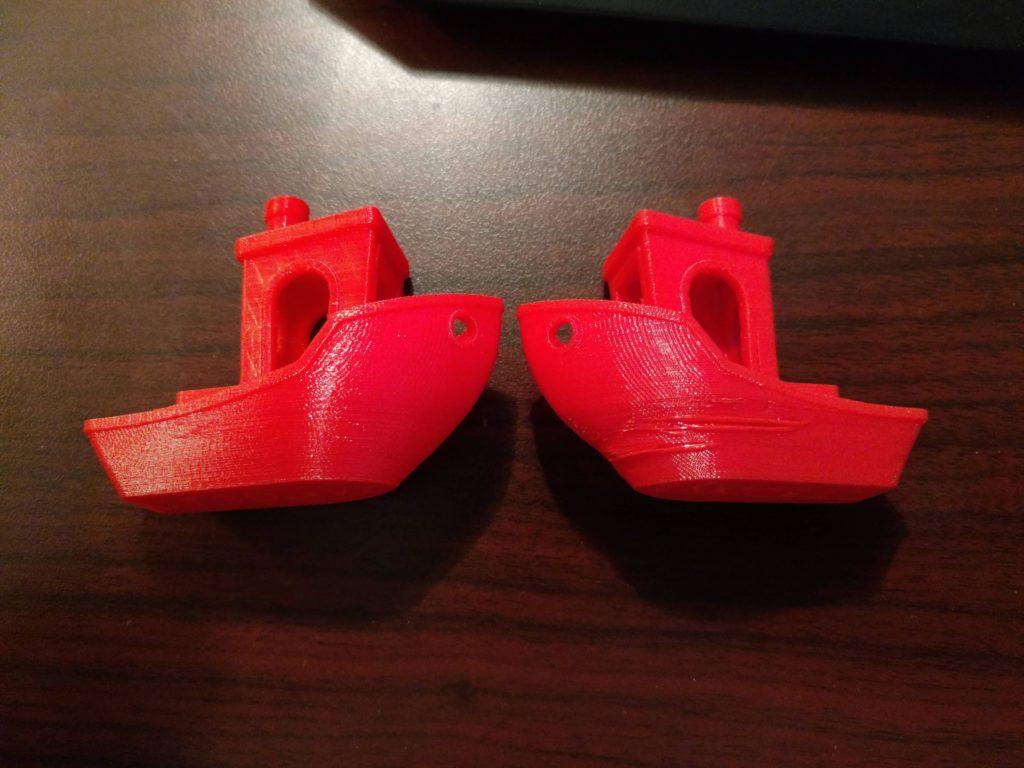 Both active and passive cooling methods are widely utilized for 3D printing plastic-based products. However, comparisons between the two suggest that active cooling will most likely lead to more accurate and precise creation of objects.
Both active and passive cooling methods are widely utilized for 3D printing plastic-based products. However, comparisons between the two suggest that active cooling will most likely lead to more accurate and precise creation of objects.
Two plastic filaments, ABS and PLA, are most often used to 3D print rapid prototypes. These filaments are often the basis of most commercial 3D printers like MakerBot, which are currently being utilized by and distributed to a substantial portion of mainstream users. ABS and PLA are extremely similar in the sense that they both are thermoplastics. During the process of 3D printing objects, the filaments are melted and molded through heat to form various objects. However, one major difference between the two filaments is build quality and flexibility.
ABS is the preferred plastic filament for professional applications and engineers seeking to 3D print objects with robust interior and flexibility. PLA, in contrast, is the preferred filament of hobbyists and students attempting to utilize 3D printers to create simple prototypes either for reference or display.
Cooling methods for PLA and ABS prints differ as well. Active cooling requires the use of a fan to cool and solidify each layer of a print before the next layer is extruded, while passive cooling requires no action. According to a recent Reddit thread and a Google forum, most users and 3D printer manufacturers have, in the past, utilized active cooling for PLA and passive cooling or enclosed cooling for ABS. It was stated that active cooling on ABS filaments caused terrible warps in the upper layers and caused other issues that cannot be dealt with after the initial print.
After a series of trials, users of 3D printers began to discover that active cooling leads to more accurate, smooth and precise 3D printed objects, even for ABS. Users of ABS noted that even during the creation of delicate structures like spheres, active cooling reduced the formation of warps and serious distortion on the surface.
“I’ve heard enclosing is the best one can do to fix this problem so I got ready for that and was about to print the items to fasten the acrylic plates to the sides. For some reason I decided to try active cooling just to see what would happen. To my surprise, active cooling worked perfectly and the sphere came out with no defects,” said a user of the FlashForge 3D printer.
Another regular user of both ABS and PLA filaments released a comparison image, with two PLA filament-based prototypes of a boat side by side, the object on the left using active and the boat on the right using passive cooling. The experiment revealed that active cooling reduced warps and distortion on the surface of the boat quite significantly, printing smooth layers of the boat’s deck without any overlapping layers.
The photographer and 3D printer enthusiast who released the image further noted, “The one on the left is with active cooling. The one on the right is passive. The bow will stay too warm during the print and tend to curl. That’s why material will build up and fall out like that.”
However, he also emphasized that active cooling should not be used on ABS, which many users seemed to disagree with. While ABS is known for its enclosed cooling method, recent discoveries indicate that active cooling leads to better results for both plastic filaments regardless of the object and types of 3D printers.
Another FlashForge 3D printer user stated, “I disagree. I print with abs on my flashforge and if I don’t use my active cooling fan, my prints turn out like the right. But when I use active cooling the prints come out great, like on the left.”
Discuss in the Active and Passive Cooling forum at 3DPB.com.
[Sources: Reddit, Google Groups]Subscribe to Our Email Newsletter
Stay up-to-date on all the latest news from the 3D printing industry and receive information and offers from third party vendors.
You May Also Like
High Stakes, High Speed: KVG Acquires 15 Nexa3D HSE 3D Printers to Boost Military Tech
As 3D printing increasingly intersects with defense and military logistics, a new partnership between Nexa3D and mission support logistics firm KVG stresses the growing importance of this technology in strategic...
3D Printer Maker EVO-tech Reborn as NEVO3D — Once More With Feeling
EVO-tech was a 3D printing service and original equipment manufacturer established in 2013 and based in Schörfling am Attersee, Austria. The company produced high-quality material extrusion systems featuring linear bearings,...
3D Printing News Briefs, March 16, 2024: Partnerships, Affordable Bioprinter, & More
We’re starting with dental 3D printing news today, and then moving on to some new partnerships. Then it’s on to some interesting university research about 3D printing plant-based pharmaceuticals, but...
FDR vs. SLA: The Right Polymer Manufacturing Choice for Your Application
The additive manufacturing (AM) industry has no shortage of acronyms when it comes to the various methodologies of industrial 3D printing. In polymer 3D printing, there are three main methods...

































